Deer are crepuscular, which means they are most active at dawn and dusk. Hence, the best time to hunt deer is either early in the morning, about an hour after sunrise, or an hour or two before sunset. If you hope to catch deer during midday, try doing it during the heavy rain.
Hunting for deer is much easier once you understand your prey. Deer have their internal clock, and you need to figure it out if you hope to be successful at tracking them down.
The main problem is that deer have quite an inconvenient schedule from a human point of view. Nonetheless, every hunter, including you, must adapt to it for a triumphant hunt. You need to know when deer sleep and when they are on the move since that can help you find them and make a killing.
This mission is a difficult one since neither their internal clock nor their daily schedule is written in stone but rather depends on current circumstances and various biological factors. I’ll help you out by teaching you everything I have learned on my deer hunting trips so far. The good news is I was coached by some of the best deer hunters out there. So, stay tuned!
Everything You Need To Know About Deer Hunting

The most important lesson you need to learn if you hope to become a successful whitetail deer hunter is that deer are crepuscular. What does this mean?
Crepuscular animals are most active during twilight – at dawn or dusk. However, it does not mean that these animals are completely inactive during the rest of the day or night.
Just like we humans sometimes stay awake throughout the night while most other people are sound asleep, crepuscular animals can be active during the night or day, too, especially if it’s a particularly moonlit night or overcast day.
So, what are the best hunting times?
In short: you have the best chance to spot deer moving during the first hour or two after sunrise and about an hour or two before sunset. Do not let anyone tell you otherwise – science has proved it!
The Best Time Of The Day To Hunt Deer
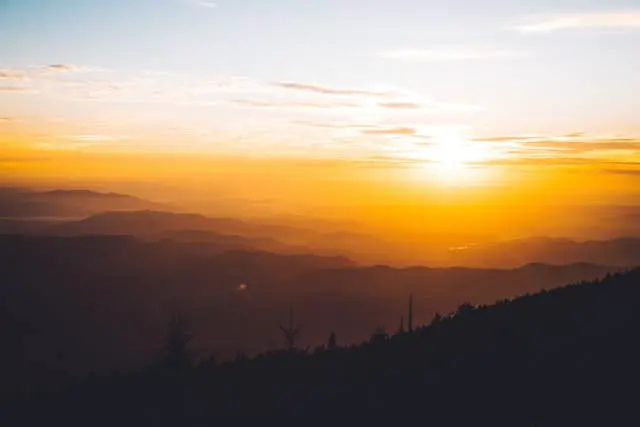
As we have already established, deer are most active at the beginning and end of the day. But they can move around throughout the day and sometimes even during the night, too. However, that is not their usual behavior and is thus it is much harder to predict.
There are numerous factors that can influence the daily movement of these crepuscular animals, such as seasonal or environmental changes, weather, wind direction, and moon phases. For example, during daylight hours, deer are more likely to move if there is heavy rain since it interferes with their sense of hearing and smell and forces them to rely only on their eyesight.
Humans play an important role when it comes to deer movement, too. If there is a lot of human presence or it is gun season, deer will be much more apprehensive and less likely to move.
Deer activity is also highly influenced by the rut, especially for mature bucks. Deer stick to their daily routine outside the breeding season, but when it is time to mate, more mature bucks start behaving erratically, just like human teenagers. I’ll talk about this in more detail later on!
For now, I’ll concentrate on explaining how different times of the day can influence whitetail hunting. I will try to be as detailed as possible, so try to keep up – it will be worth your time.
Morning Hunts

You have realized by now that you need to get out of your bed a few hours before dawn if you want to hunt deer. You should be at your hunting spot at least an hour before the sun comes up so you can get ready and catch deer on their way to their bedding area. If you miss this opportunity, you might have to wait for hours before any new deer sightings.
If you are hoping to catch a trophy buck, you should combine morning hunts with mating season. During the rut, mature bucks get distracted by chasing does and thus often stay up longer than usual.
Hence, you and your fellow hunters are more likely to catch them when the sun starts coming up, and they recklessly hurry up to go back to sleep. As they will be tired from their adventures, maybe a buck or two will make a mistake and wander right into your gun’s range.
Midday Hunts
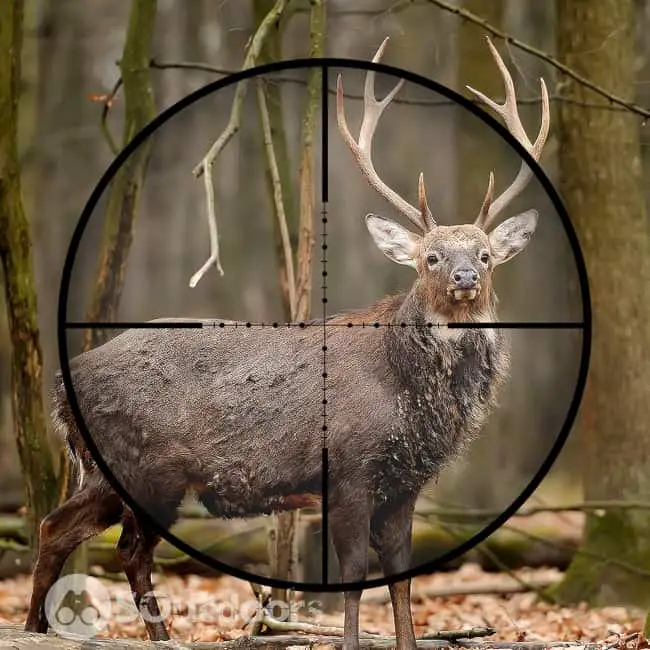
As I have already said, deer sometimes move during the daytime too. Unfortunately, midday deer movement is erratic and thus highly unpredictable. It depends on many factors.
In normal circumstances, deer spend the day sleeping. This way, they avoid contact with humans too. I have already told you, though, all bets are off during the rutting season. It is one of the best times to be in deer woods, even at midday, as there are high chances you can hunt down a nice buck recklessly chasing a doe.
If the day is particularly cloudy or there is heavy rain, you can expect increased deer movement throughout the day. I have had luck shooting down a big buck one rainy afternoon, too, but I still do not enjoy hunting during rain much.
Evening Hunts
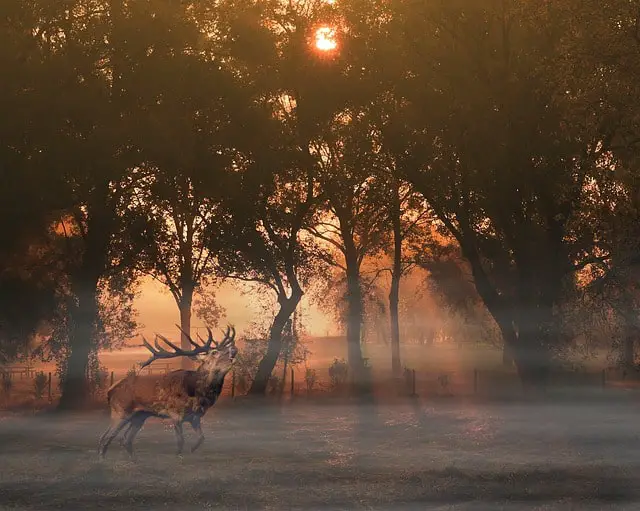
Many experienced deer hunters will tell you that hunting deer at dusk is on par with hunting them at dawn. Yet, I give a slight advantage to hunting deer in the evening, especially outside the breeding season. Why is that?
The answer is simple. Deer have been sleeping all day long, which means they are hungry. Their empty stomachs need to be filled, and thus, food is the only thing they are thinking about. It makes them less apprehensive and gives you a better chance of success.
During the early season, while it is still rather hot outside, deer prefer feeding at night. Due to heat, they reduce their activity in the morning and during the day. Therefore, when hunting during the first several weeks of the season, make sure you are at your treestand last two hours in the evening. This is when the air starts to cool down, and deer head out to find food and water.
I generally prefer hunting at dusk. I am much more alert in the evening than I am when I roll out of my bed at 4 a.m. in the morning. I also have plenty of time to prepare for my hunting adventure and find a good position for a stakeout.
It is easier to do this while there is natural light in the woods. When you hunt deer in the morning, you have to get to your stand while it is still dark. If you come late, deer could already be sleeping, and you risk spooking them before having any chance to position yourself and take a good shot.
But you do not have to agree with me. If you are a morning person, or you can manage quite well in the dark, you might be more successful hunting for deer at dusk. In general, you cannot go wrong, as long as you get to your stand during the twilight hours.
Night Hunts
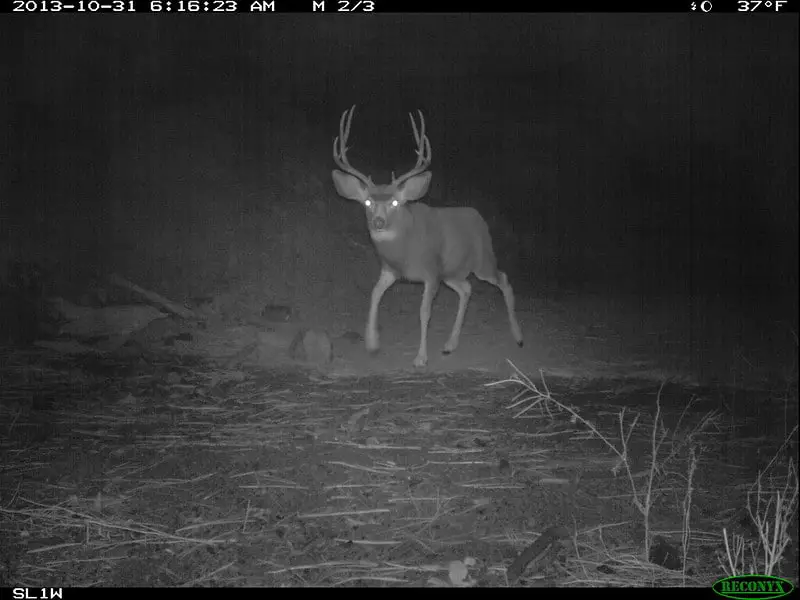
Being crepuscular animals, deer move to and from their feeding areas during the twilight hours. They feed throughout the night and then go back to sleep when the day breaks. There might not be as much deer movement at night since they are feeding out in the open. However, it’s when you’re most likely to see them and when you have the best opportunity to shoot them down.
My hunting buddy once told me that night is the best time to hunt deer, and he was right. So, why aren’t the two of us hunting during the night if that would allow us to shoot more deer? The answer is simple: we are not allowed to.
Doing so would mean breaking the law, and not only in our state – hunting for deer at night is forbidden throughout the USA. Most states have set laws against using artificial lights or night vision goggles and laser sights.
Even though my buddy is a bit frustrated that he cannot hunt at night or use high-tech gadgets, I am not. It would make the hunt easier, and I want to be challenged – that is why I often go bow hunting too.
If you are not seeing deer, it might be for one of the three reasons presented in this video:
What Affects Deer Movement?
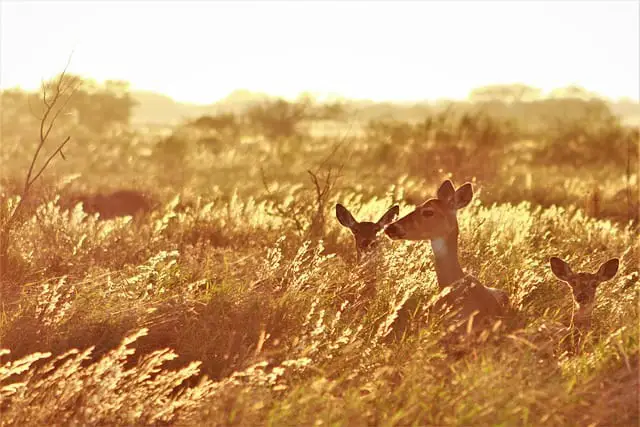
Human Movement & Hunting Pressure
Deer biology is not the only thing that affects deer movement – human movement is almost as influential. Human presence can alter deer behavioral patterns. It works both ways.
For example, if you are patient enough to remain at your treestand until all the other hunters are gone from the woods, you might get a chance to shoot deer they have disturbed while leaving. So, outlasting your competition might pay off big time.
However, human presence can inhibit deer movement too. I once stayed at the same hunting spot for a couple of days and didn’t see a single deer, even though my buddies had plenty of success there just a few days ago. Deer were likely spooked by our presence and changed their patterns to avoid us. In general, deer avoid mixing with humans as much as possible.
Hunting pressure influences deer behavior too. Hence, you must pay close attention to fellow hunters and when and how they hunt. Typically, deer won’t return to a hunting stand area they were shot from for about three to five days.
Therefore, during the hunting season, it is wise to avoid locations other hunters prefer hunting from. Try to find alternative entry points on public land since that will give you a significant advantage. You can use various hunting apps to help you find the best hunting spots and access points to get to them.
Motorized vehicles we use to get to and from our hunting spots create a lot of noise and produce scents that drive deer away. So, it’s wise to use electric transportation, such as golf carts, to get to the hunting area to eliminate these distractions and avoid spooking deer.
To find out how deer avoid hunting pressure, watch the video below:
Moon Phase
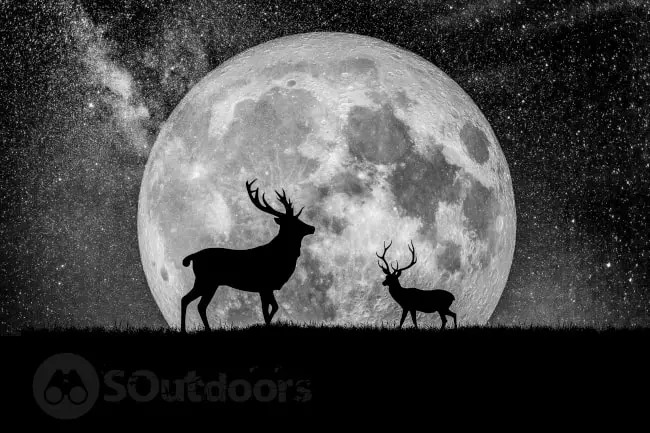
The moon phase can have some influence on your hunting success. However, there is much debate on the subject of how and to what extent moonlight influences deer behavior.
Some research shows a correlation between deer activity and moon phases, while others claim moon phase has an insignificant effect on deer movement.
Since many of these studies had been conducted before GPS collars were used, I took a look at the more recent study by Dr. Marcus Lashley at North Carolina State University. He has used about 22,000 GPS fixes on live deer and concluded what we have already known all along: regardless of moon phases, deer move mostly at dawn or dusk.
He also noticed that during the full moon, there is slightly increased deer activity at midday. Their activity shifts to later hours as the moon waxes and wanes too. The most extreme deer activity he noticed took place during the last hour of light each evening.
Lashley also found that during the last-quarter moon, deer move more during the late afternoon. Their activity at dawn was greatest during the new moon when there was the least light. One might argue that his hard work was all in vain since none of these increases in activity are significant.
You should also note that his study included only does. It also failed to cover the rutting season. Therefore, this research cannot answer the crucial question of whether the rutting activity is highest at night under a full moon.
If you are interested in learning more about this study and how the moon phase influences deer behavior and movement, watch the video below:
Rut
As I have already told you, anything goes during the rutting season. Bucks are on the move all day long, regardless of heat or almost any other factor. For this reason, you can have a successful deer hunt at any hour of the day or night while the breeding season lasts.
I have great advice about finding more deer during the rut, especially if you hope to shoot a big buck. You should go into the woods during the preseason and scout the areas where does like to feed. Once the breeding season begins, you’ll know exactly where and when to find these does, and bucks will be right behind them – believe me.
You can also be successful right before the rutting season since bucks will feed more frequently than usual to ensure they have enough energy for breeding. The best time to hunt during this period is during the first hour of light in the morning since that is when bucks return to “bed” after night-long feeding.
Food & Water Availability
Like all living beings, deer cannot survive without food and water. Therefore, their feeding habits dictate most of their activities during the day. You can use that to find them more easily.
In a 24-hour period, deer will feed around five times – it is a calorie game they must win. Since deer do not eat plants all the way to the ground, but rather take a bite of their most nutritious parts and then regurgitate and chew the curd, they must constantly keep moving in search of food. This is called selective foraging.
If they sense any human presence, or there is significant hunting pressure in their area, deer (especially big bucks) will wait for nightfall to get to their food plot. In the meantime, they will satisfy their hunger by eating in staging areas between their bedding area and their usual feeding spot.
What do deer like to eat? It depends on the season and the region they live in. Most often, deer feed on grass, wildflowers, buds, shoots, fruit, mushrooms, nuts, forest berries, and young leaves from various trees. They are habitual animals, and unless something interferes with their routine, deer try to maintain a rhythmic feeding schedule. So, knowing what they eat and when they eat can help you keep track of their movement.
We have already established that the best time to hunt deer is when they go out to eat or head back from their feeding spot. You should thus try to be in position as deer move to their feeding area, or wait for them there.
Extra advice: If you want to attract deer to your hunting ground, you can set up deer feeders.
What about water? Can water availability influence deer movement too? Of course! Deer are known to drink three to five quarts of water a day. To achieve this, they must drink water at least a few times during the day.
For this reason, their bedding spot is usually located near a source of water. Hence, if you manage to locate small water sources near known bedding areas, you have found yourself a good spot to set up your tree stand.
Cover & Safety
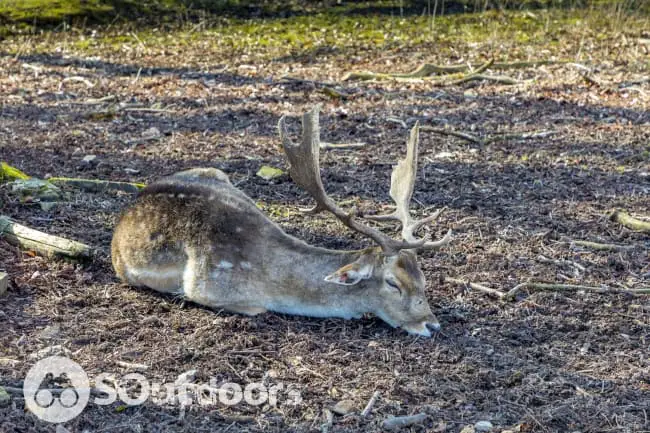
Deer have many enemies. There are many predators lurking and trying to make them their prey, and there are also people who want to hunt them down. Therefore, deer must take cover to stay safe but also be able to sense danger in time to escape.
For all the reasons stated above, deer prefer a thick cover that can hide them from enemies during the day. As far as bedding is concerned, bucks usually have about three to five different locations they use for sleeping over the course of one year. In this way, if they sense human presence or some other danger, they can simply move elsewhere and feel safe again.
I used to imagine deer lying on the grass and sleeping peacefully. However, that is not how these animals sleep at all. Does might have longer “naps” but bucks rarely lay down for more than 10 minutes at a time – most of the time they just snooze for a couple of minutes and get up to their feet. During these short periods of alertness, bucks either stand up and stretch or have a quick bite to eat.
As I have already mentioned in the previous section, does prefer staying close to a water source. Bucks, on the other hand, usually choose higher ground to secure a clear view and be able to react quickly in case of any danger.
Since deer are creatures of habit, once they choose their bedding, they are not likely to abandon it until they are driven from it by human presence, hunting, or some other form of danger. They might change their bedding during the breeding season, though.
What is the best time to hunt deer around their bedding area? Once you identify the bedding area, you should follow the deer and see where they feed. Next, pay attention to the weather forecast. The ideal time to go out hunting in this area is on a warm morning that follows a rather cold night. Why?
Well, deer tend to sleep longer when it is cold outside. That means they get hungrier than usual, and they will thus hurry to their feeding spot as soon as they feel the first sun rays. You should be waiting for them somewhere along their usual route between the cover and their feeding spot. If you do this, you’ll be in the right place at the right time and most certainly get a chance to shoot down a deer.
The following video will help you find deer moving to and from their bedding area:
FAQs
What time of day are deer most active?
Deer are most active at dawn and dusk. They are crepuscular animals that are not very active during the daylight hours, so do not expect a lot of midday movement. The best hunting time for deer is thus either early in the morning or just before sunset.
Where do big bucks go during the day?
During the day, big bucks go to the so-called core area. It is typically a central location where bucks spend most of their daylight hours. The core area is a location that makes them feel secure and safe enough to sleep during the day.
How long should I sit for deer in the morning?
In the morning, you should sit for at least 45 minutes in your hunting spot before it becomes bright enough to see. In that way, deer will calm down even if they have detected you while you were getting to your position.
What time of day are most big bucks shot?
The time of the day most big bucks are shot within depends on the time of year and the region. In general, big bucks are most active during dawn and dusk, especially during the rutting season.
Is morning or evening better for deer hunting?
It is impossible to say whether morning or evening is better for deer hunting as that mostly depends on your personal preference and other factors influencing deer movement and behavior. I personally prefer hunting at dusk, as I am not a morning person.
My Final Thoughts
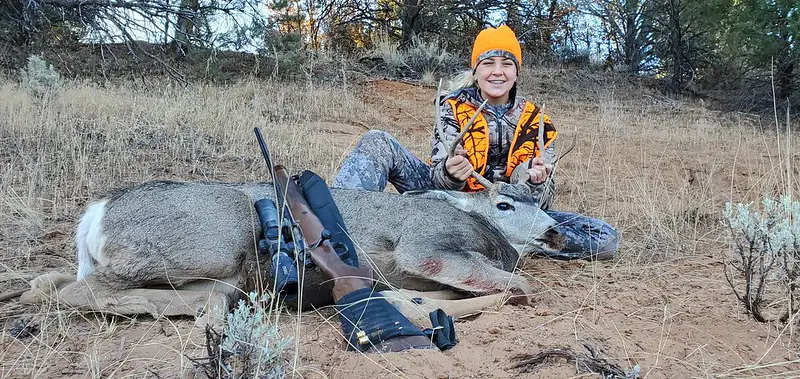
Knowing what hunting times are best can help you catch more deer. You will be more confident and able to outsmart many hunters. As you have just read, there are two almost equally good options:
- Hunting for deer at dawn
- Hunting for deer at dusk, an hour or two before sunset
Choosing between the two is a thing of preference, but your success might also depend on various other factors such as weather, food and water availability, or the infamous human factor. I have already told you I am more of an evening guy, but what about you? Are you like me, or are you an early bird?
Do comment and share this article. Thanks! I wish you good luck on your next deer hunt!


I fully agree with the author. In my 70 years I have harvested many Deer and the far majority of them wewe between 10am and 1 pm. I seem to see more Does in the evening but Bucke are on the move in the middle day around 10 t0 1 or 2 pm. The cold weather also helps. I hunt in Michigans U.P,
i cant say i agree im inn the woods every day and i just saw chasing today and big buck laying in the middle of fields so to me the rut in nj just realy is kicking inn and its nov 14th
I’ve hunted over forty years mornings and evenings or best but around where there’s plenty of deer any time of the day is alright summer hot part of the day moving to water holes just hunt when you can good luck most of all hunt where you know there’s deer the more deer the better your chance s are good luck
Best advice I’ve heard thank you
Hunt all day, avoid the nagging wife at home!
That’s funny I tried that went home after three day of hunting and caught her in bed with my best friend and all I could say to him was bad dog bad dog. 🤣 JK.
What if the wife hunts, too?!
Yeah, I’m the wife. I hunt most every day during deer and elk season. It’s like pulling teeth to get my husband out in the woods! I work hard and have harvested all our meat in the last 10 years (5 elk, 5 deer, multiple turkeys) and he’s gotten one elk (on the last day of his 4 month season 🙄). Give us wives a break. Thank you for all of your advice, I have yet to bring home a whitetail monster and been watching one. I will take your advice into consideration today.
Then we all know what you’ll be doing in the woods during “break time”!!! Lol